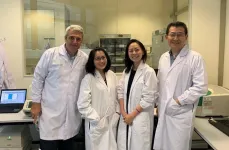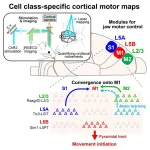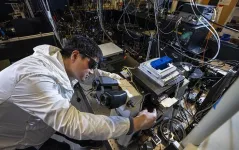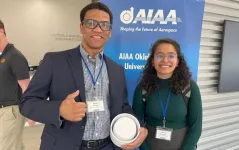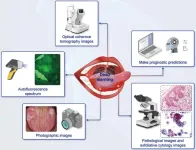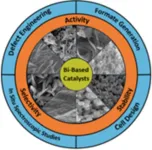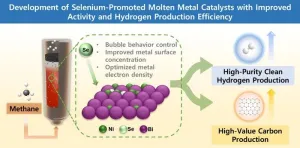To learn more about research at City of Hope, one of the largest and most advanced cancer research and treatment organizations in the U.S. with its National Medical Center named top 5 in the nation for cancer by U.S. News & World Report, subscribe to City of Hope Research Spotlight.
Common drug amplifies the power of viral immunotherapy against multiple myeloma
Scientists often deploy a virus as a Trojan horse that sneaks therapies into the immune system to infect and kill cancer cells. City of Hope researchers have discovered that adding a common drug to a type of RNA virus called reovirus enhanced its ability to destroy a class of blood cancers, according to a Journal of Hematology & Oncology study.
While prior research showed that multiple myeloma patients safely tolerated the virus, scientists did not see significant disease control linked to viral replication in the cancer cells. Adding proteasome inhibitors — drugs often used to treat multiple myeloma — enhanced the virus's ability to fight cancer, but the mechanisms remained unclear.
New research co-led by Flavia Pichiorri, Ph.D., M.S., a City of Hope professor of hematologic malignancies translational science, used a spectrum of sophisticated techniques to analyze how the reovirus infects both cancer and immune cells. Her team found that:
Proteasome inhibitors helped the virus replicate more effectively in immune cells called monocytes, improving delivery of the virus to cancer cells. The monocytes’ ability to fight the virus relied on a signaling pathway known as NF-κB, which weakened in the presence of proteasome inhibitors. Conversely, adding proteasome inhibitors to reovirus therapy activated the immune system to help kill the multiple myeloma cells. To validate these findings, the team conducted a small clinical trial combining a reovirus with a proteasome inhibitor in 13 multiple myeloma patients whose cancers had resisted earlier treatments. Remarkably, about 70% of the patients showed positive responses, with signs of active viral replication in their cancer cells and an increase in T cell activity, an important part of the immune response.
For more information, see the Journal of Hematology & Oncology study.
Circulating tumor DNA testing shows limited benefits for certain colorectal cancer patients
For patients who have had colorectal surgery to treat cancer, serial circulating tumor DNA (ctDNA) testing — which looks for the presences of tumor DNA in the blood — is a routine, follow-up procedure to track potential disease recurrence. But it’s unclear if adding ctDNA to standard-of-care surveillance actually improves outcomes.
In a recent retrospective study of 184 City of Hope patients with resected Stage 2 to 4 colorectal cancer, Marwan Fakih, City of Hope section head of Gastrointestinal Medical Oncology and Judy & Bernard Briskin Distinguished Director of Clinical Research, and colleagues found that incorporating serial ctDNA data with imaging tests led to curative surgeries in very few patients.
The team found that while 20 patients had early ctDNA detection of recurrence prior to imaging findings, only 3 of 11 patients — 1.6% of the total cohort — had widespread recurrences that were treated with curative interventions and did not recur by the end of the study. On the other hand, 12 of 25 patients whose recurrence was identified by imaging first, with or without concurrent ctDNA positivity, underwent curative procedures and seven of them remained without evidence of disease as of the cutoff date.
These results suggest there may be limited clinical benefits to adding ctDNA to follow-up surveillance without additional research to determine its ability to substantially improve outcomes over the standard of care.
For more information, see the JAMA Network Open paper.
Making the case for remote monitoring of patients after surgery
In a guide for JAMA Surgery, Yuman Fong, M.D., the Sangiacomo Family Chair in Surgical Oncology at City of Hope, and Laleh Melstrom, M.D., M.S.C.I., City of Hope chief of the Division of Surgical Oncology, along with Heather Evans, M.D., from the Medical University of South Carolina, outlined the advantages and disadvantages of using remote monitoring for surgical patients.
Advances in sensors and other medical technologies, combined with the necessity of remote patient monitoring (RPM) during the COVID-19 pandemic, has accelerated the use of RPM by clinicians. According to Dr. Fong and Dr. Melstrom, RPM using sensors, wearables and cellphones is well suited for perioperative care. They believe surgical RPM could be delivered in most cases using intermittent and asynchronous data monitoring methods, including disposable, inexpensive multisensors for assessing activity, laboratory values, and other parameters of recovery and health. The guide includes a table with examples of available technology along with their function, cost, and pros and cons of each device.
According to the study, RPM allows for triaging of patients for in-person postoperative follow-up, improving quality and reducing readmissions. To address access issues, Drs. Fong and Melstrom recommend that RPM studies of rural patients and those who lack transportation should be prioritized to reach these populations who are most in need of the technology.
For more information, see the JAMA Surgery review.
MRI screening rates for breast cancer in high-risk women
Enhanced breast cancer screening with magnetic resonance imaging (MRI) is recommended for women with an elevated risk of breast cancer based on genetic testing. To see how often these recommendations are followed in high-risk women, a group of researchers led by Leah Naghi, M.D., City of Hope assistant clinical professor in the Department of Medical Oncology & Therapeutics Research, analyzed three years of surveys from 638 ethnically and economically diverse women who had received multiplex panel genetic testing for cancer risk genes, followed by genetic counseling .
In a recent paper published in JAMA Network Open, Dr. Naghi and her co-authors report that the women in the study whose test results indicated an inherited risk of breast cancer — either through BRCA genes or other high-risk pathogenic variant (PV) — had higher and more consistent rates of MRI screening than their lower-risk counterparts. In fact, patients with a BRCA or other high-risk PV were approximately 10 times as likely to undergo MRI screening compared to lower lifetime risk patients. And the high-risk patient group was nearly 16 times as likely to report consistent yearly MRI screening compared to lower-risk patients.
Patients had a mean age of 50.7 years. There were 43 patients, or 6.7%, with a BRCA or other high-risk PV, and 16, or 2.5%, with a moderate-risk PV. Women with moderate-risk PVs also reported higher rates of MRI screening.
These findings emphasize the importance of genetic testing in driving enhanced screenings compliance, according to researchers.
For more information, see the JAMA Network Open paper.
CAR T cell therapy for B-ALL shows promising results in clinical trial of adult patients
B cell acute lymphoblastic leukemia (B-ALL) is a common type of ALL in adults. An intensive chemotherapy regimen can put some adult patients into remission, but more effective treatments are needed. Furthermore, when adult patients relapse, the cancer is even more difficult to treat. Hence, there is an ongoing need to optimize treatments to improve efficacy and reduce serious side effects in adults with B-ALL.
Obecabtagene autoleucel — also known as obe-cel (commercial name: AUCATZYL) — is a CAR T therapy engineered to better recognize cancer cells and reduce excessive T cell activation, which plays a role in serious side effects related to CAR T cell therapy. A team of scientists, including Karamjeet S. Sandhu, M.D., City of Hope assistant professor in the Division of Leukemia, recently published results from a phase 1b-2 study of obe-cel , in patients who are 18 or older with relapsed or refractory B-ALL in The New England Journal of Medicine (NEJM).
The clinical trial was designed to further evaluate the efficacy, safety and durability of a treatment response in patients who received infusions of the CAR T therapy. In the main cohort of 97 patients, overall remission was achieved in 77% of patients, with complete remission observed in 55%. Among all study participants, 12-month, event-free and overall survival estimates were 49.5% and 61.1%, respectively. There were fewer high grade adverse effects.
The study authors say their findings show a high incidence of a durable response to obe-cel in adults and that the therapy can be administered safely in this patient population to improve outcomes. The results are part of the FELIX study that was conducted at 34 sites in Spain, the United Kingdom and the United States.
The Food and Drug Administration has approved the therapy for use in adults with relapsed or refractory B-ALL patients and will be offered as a commercial CAR T therapy at City of Hope soon.
For more information, see the NEJM paper.
Awards and Honors
Rusha Bhandari, M.D., M.S., assistant professor, Department of Pediatrics and Department of Population Sciences, received a 2025 American Society of Hematology (ASH) Scholar Award, which provides funding and mentorship to early-career investigators. Andri Leo Lemarquis, M.D., Ph.D., staff scientist, received a 2025 ASH Scholar Award, which provides funding and mentorship to early-career investigators.
Grant Funding
Terence Williams, M.D., Ph.D., City of Hope chair of the Department of Radiation Oncology, has been awarded a $3.88 million grant from National Cancer Institute to study tumor-selective radiosensitization by targeting hypoxia in rectal cancer.
Nagarajan Vaidehi, Ph.D., City of Hope associate director for informatics and computational medicine, received $2.67 million from National Institute of General Medicine Sciences for a research project titled “Emergent role of allostery on function of GPCRs and Trimeric G proteins.”
Lili Wang, M.D., Ph.D., City of Hope professor in the Department of Systems Biology, and Alexey Danilov, M.D., Ph.D., City of Hope’s Marianne and Gerhard Pinkus Professor in Early Clinical Therapeutics, and director of the Early Phase Therapeutics Program for the Systems Clinical Trials Office, have been awarded $3.51 million from the National Cancer Institute for a research project titled “Attacking the Tumor Cell-Immune Milieu Interface to Overcome Richter's Transformation.”
Rui Su, Ph.D, City of Hope assistant professor in the Department of Systems Biology, has received $2.43 million in funding from National Cancer Institute for research on targeting mitochondrial RNA methylation in high-risk acute myeloid leukemia.
Yanzhong Yang, M.D., Ph.D., City of Hope associate professor in the Department of Cancer Genetics and Epigenetics, has been awarded $2.22 in funds from National Institute of General Medicine Sciences for research focused on protein arginine methylation in transcription and RNA metabolism.
# # #
About City of Hope
City of Hope's mission is to make hope a reality for all touched by cancer and diabetes. Founded in 1913, City of Hope has grown into one of the largest and most advanced cancer research and treatment organizations in the U.S., and one of the leading research centers for diabetes and other life-threatening illnesses. City of Hope research has been the basis for numerous breakthrough cancer medicines, as well as human synthetic insulin and monoclonal antibodies. With an independent, National Cancer Institute-designated comprehensive cancer center that is ranked top 5 in the nation for cancer care by U.S. News & World Report at its core, City of Hope’s uniquely integrated model spans cancer care, research and development, academics and training, and a broad philanthropy program that powers its work. City of Hope’s growing national system includes its Los Angeles campus, a network of clinical care locations across Southern California, a new cancer center in Orange County, California, and cancer treatment centers and outpatient facilities in the Atlanta, Chicago and Phoenix areas. City of Hope’s affiliated group of organizations includes Translational Genomics Research Institute and AccessHopeTM. For more information about City of Hope, follow us on Facebook, X, YouTube, Instagram and LinkedIn.
END
